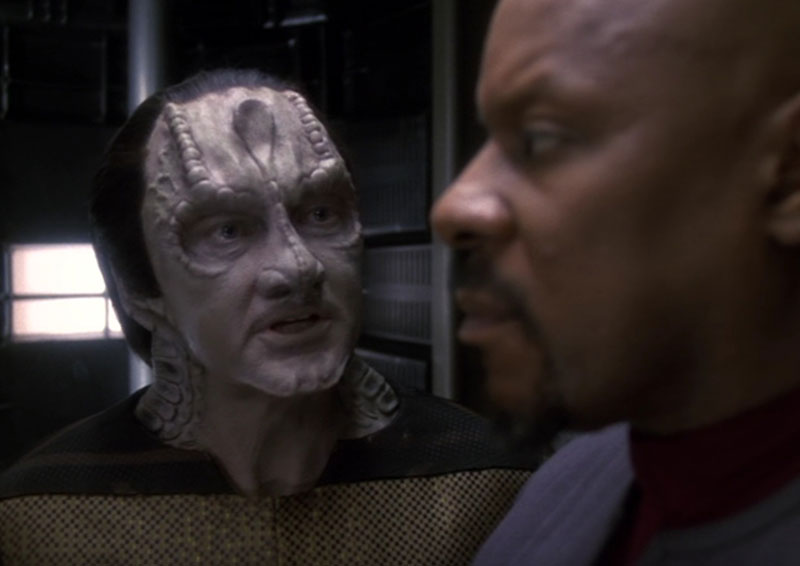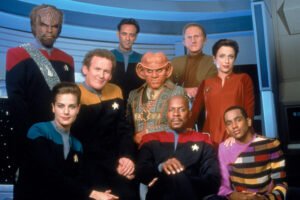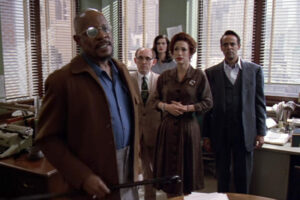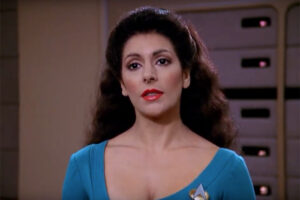
In the vast galaxy of Star Trek episodes spanning multiple series and generations, ‘In the Pale Moonlight’ from Star Trek: Deep Space Nine (DS9) stands out as one of the most exceptional installments. This episode beautifully encapsulates the show’s darker, morally complex nature, setting it apart from other Star Trek series while offering an introspective journey that leaves audiences reeling.
‘In the Pale Moonlight’ is DS9’s sixth season’s nineteenth episode, set amid the backdrop of the Federation’s harrowing war against the Dominion. This context, a conflict where the supposed good guys are consistently losing, allows for Captain Benjamin Sisko, played by Avery Brooks, to be pushed to his ethical and psychological limits, thereby setting the stage for a story that is more human and fraught than any other.
At its core, ‘In the Pale Moonlight’ hinges on a morally ambiguous plot to deceive the Romulans into entering the war, thereby shifting the balance in favor of the Federation. Sisko’s painstaking progression from discomfort to acceptance of his actions offers a stark contrast to the Star Trek’s usual optimistic vision of the future, presenting a more relatable, realistic, and arguably more engaging narrative.

One of the reasons why this episode resonates so profoundly with fans lies in its sophisticated narrative structure. ‘In the Pale Moonlight’ is narrated in the first person, a rarity in Star Trek, giving it an intimate, confessional tone. Sisko’s log entries frame the narrative, allowing us an unprecedented insight into his inner world. This narrative structure allows viewers to share in Sisko’s ethical struggle in a way that few other episodes do.
The exploration of moral complexity in ‘In the Pale Moonlight’ also sets it apart. Sisko, usually the epitome of Starfleet principles, is driven to collaborate with unsavory characters, fabricate evidence, and even implicitly accept murder, all for a “greater good.” Sisko’s moral compromise presents a stark challenge to the traditional Star Trek ethos, embodied by characters such as Captain Kirk or Picard, who typically find a way to uphold their principles in the face of adversity.
Moreover, this episode isn’t afraid to leave these moral quandaries unresolved. When Sisko admits at the end that he “can live with it,” the audience is left to grapple with the unsettling reality of what he’s done. Such bold storytelling highlights DS9’s willingness to examine the grayer shades of morality.
The performances in ‘In the Pale Moonlight’ are another key component of its brilliance. Avery Brooks delivers an unforgettable performance, painting a vivid picture of Sisko’s internal struggle. In contrast, Andrew Robinson’s performance as Garak provides the necessary pragmatism to counterbalance Sisko’s moral wavering, underpinning the episode’s ethical dilemma with his amoral certainty.
In terms of symbolism, the episode’s title itself is a brilliant piece of storytelling. ‘In The Pale Moonlight’ references a monologue from Shakespeare’s Julius Caesar, where Brutus rationalizes his impending betrayal of Caesar. It serves as a fitting metaphor for Sisko’s actions throughout the episode, emphasizing the personal and moral sacrifice Sisko makes in order to safeguard the Federation.
Finally, it’s worth noting that ‘In the Pale Moonlight’ brings out the best of DS9’s serialized storytelling. The episode builds on the long-running Dominion War arc, meaning that the stakes are palpably high. This is a story that could only happen in DS9, born from the unique pressures of its darker, war-torn universe.
In conclusion, ‘In the Pale Moonlight’ is a standout episode in Star Trek: Deep Space Nine, if not the entire Star Trek franchise, due to its exceptional narrative structure, complex moral themes, stellar performances, and skillful use of symbolism. It boldly goes where few Star Trek episodes have gone before, challenging our perception of right and wrong, and in doing so, it brings out the best of what Star Trek, at its heart, aims to be: a reflection on the human condition.









Leave a Reply